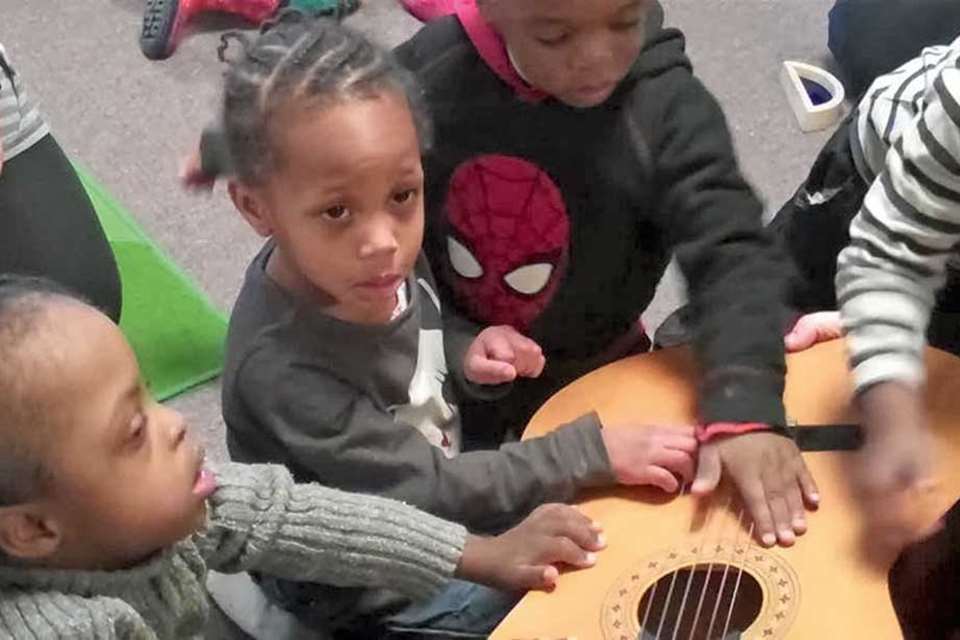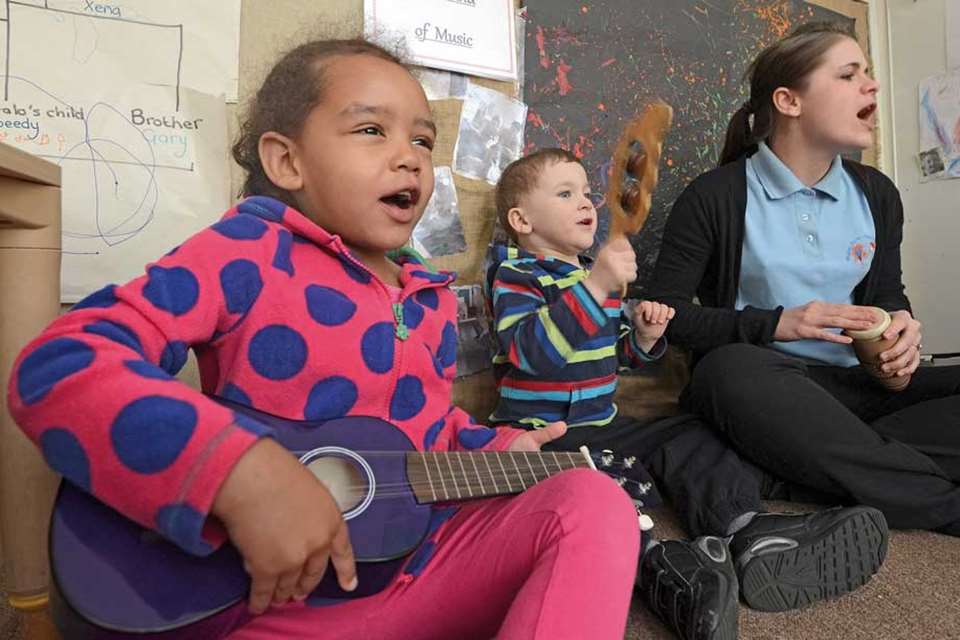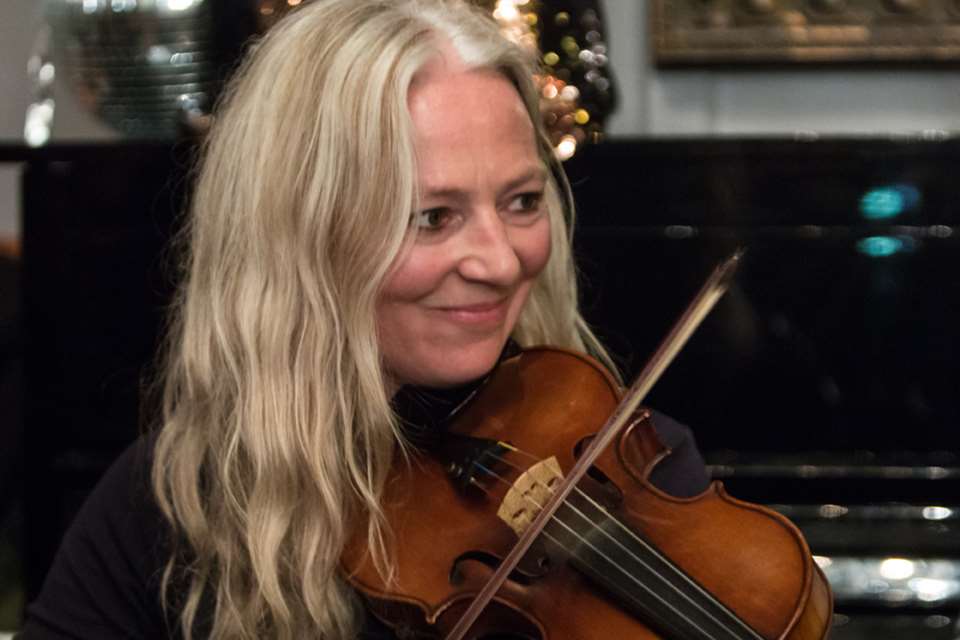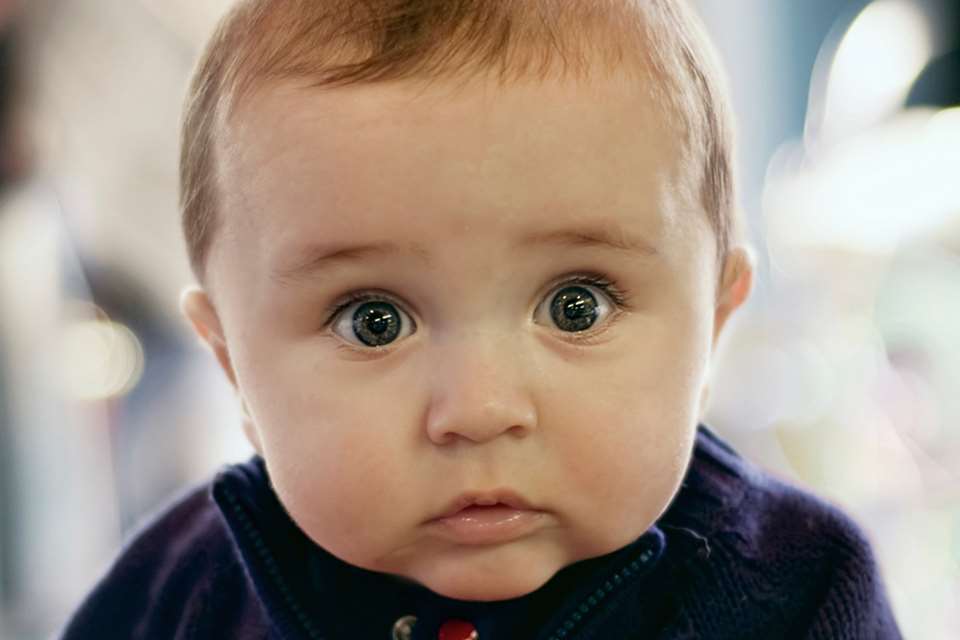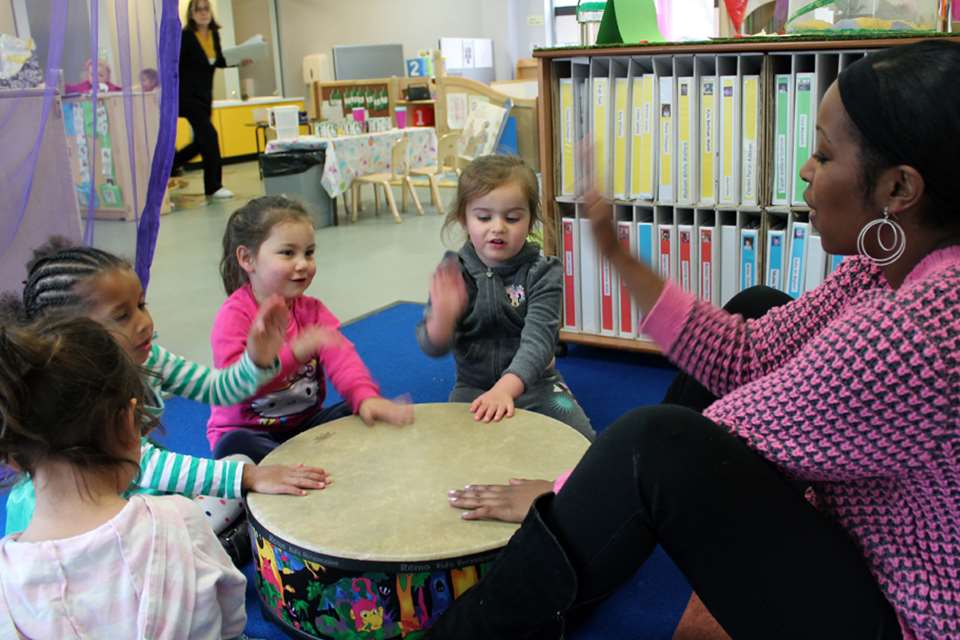A Unique Child: Music - In the mood
Bill Roberts
Monday, August 22, 2016
‘Mood music’ offers a playful and contained way to begin to give shape and expression to what may be difficult emotional experiences for young children. Community musician and trainer Bill Roberts presents songs and ways of using instruments to support emotional development
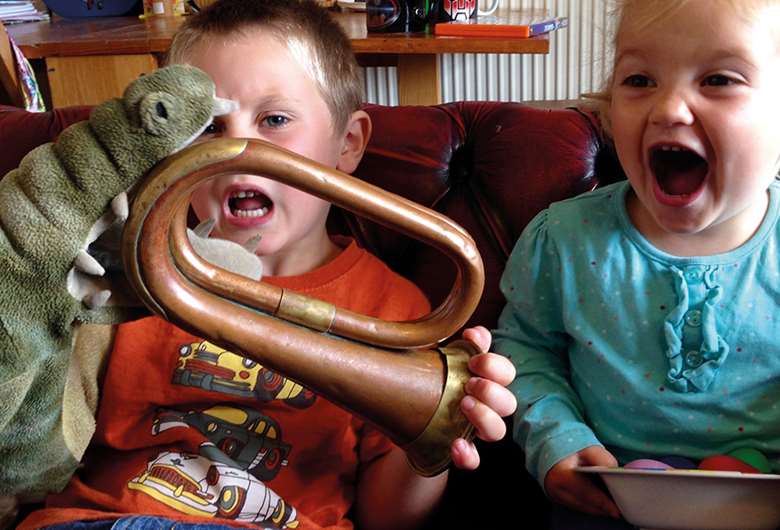
We have no choice about how we feel, but we can choose whether to dismiss or address our feelings – and those of the children that we work with.
The ability to acknowledge and make sense of what we, and others, are feeling is often referred to as ‘emotional intelligence’ – an idea introduced by Daniel Goleman in a book of that name – and should form a natural part of child-centred practice.
So, do you tend to ignore your own and children's difficult emotions through distracting practical tasks? Or do you try to find words, music, movement, art or other experiences that give expression to feelings and help provide a better understanding of them?
When children receive negative messages about a show of emotion and are rushed to move out of sadness, anger or fear, they begin to doubt and deny parts of themselves. All too often this can develop into emotional and behavioural difficulties in later childhood, and mental health problems in adult life.
The good news is that acknowledging where we are emotionally actually helps us move on. So, listening to and matching a child's feelings to songs or music of a similar mood can open up a ‘therapeutic moment’ and enable the child to move on from ‘stuck’ emotions, such as whining and aggression. (It also calls into question the extent to which we often offer children a saccharine musical world full of only happiness!)
Mood music can raise a child's awareness of emotions and make it easier for them to make choices about how they act. When a person (child or adult) is flooded with emotion, they are unable to make choices about how to behave socially. However, they can often respond to an invitation to express that emotion in a contained way. And, paradoxically, accepting and honouring the emotion that is giving rise to the unacceptable behaviour helps children (and adults!) add more behavioural choices to their repertoire.
A key idea in this work is not judging – letting go of ‘shoulds’ and ‘shouldn’ts’. Dan Hughes, a US attachment therapist, uses the acronym PLACE to summarise five key qualities that he offers children in his work:
Playfulness
Love
Acceptance
Curiosity
Empathy
Here are some ideas for identifying children's emotions and providing opportunities for children to express and understand their feelings. As well as music and songs, I’ve found that using puppets and sharing our own experiences helps children move towards looking at themselves. And a quick note about singing. If you want to sing short phrases, start with the two-note tune that we all use when we call someone's name – hey presto, you just became an improvising songwriter!
NAMING FEELINGS AND THEIR CAUSES
The first step in learning about moods is being able to recognise and name them.
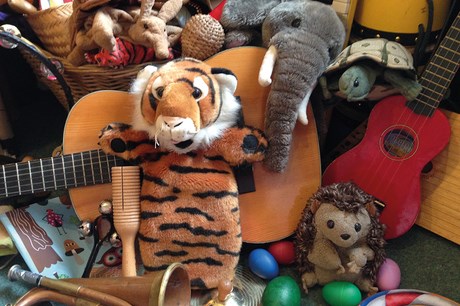
Modelling moods
Use a puppet to model a mood and all sing to it: ‘Mood music, mood music, what mood are you in?’
Ask the children what they think its mood is, and discuss how they know (‘He's crying’, ‘Her face looks cross’, ‘He's using a grumpy voice’).
Then all can sing ‘Why are you grumpy/sad/scared?’
Again ask the children for ideas – accept every suggestion as they will all be representations of what is in their lives.
Daily emotional check-in
Sing ‘Good morning, Alfie, how are you?’ to give every child an opportunity to voice how they feel; model it by sharing something about yourself.
Labelling the mood behind the behaviour
To help children make the link between feelings and behaviour, sing (to the tune of ‘She’ll be coming round the mountain’) statements such as, ‘When I’m stomping round the house I’m feeling cross’, or ‘When I’m calling for my mum I’m feeling scared’, or whatever the children come up with.
Groups of emotions
Most feelings fit into four basic groups: happy, sad, angry and scared, and these are usually associated with particular types of music, actions and colours (see box overleaf).
Explore these different moods with the children to develop vocabulary and see which group they are part of – for instance, excited, calm, joyful (happy); upset, miserable, down (sad); grumpy, cross, furious (angry); worried, anxious, frightened (scared). Then sing songs that are linked to these emotions. (Moods that don’t fit into these categories include surprised and disgusted.)
EXPRESSING FEELINGS
Explore how emotions are expressed through the body.
Facial expression and voice
Children love to make faces and different voices. Mahachagogo is a fun spoken (not sung) rap in which the leader models the voice, expression and action to fit a mood and the followers respond in the same way.
Leader says: Followers say:
‘When Mahachagogo is happy he says…’
‘Mmmm’ ‘Mmmm’
‘Aaaah’ ‘Aaaah’
‘Ooooh’ ‘Ooooh’
‘Lah lah lah’ ‘Lah lah lah’
[sing-song voice]
‘Then he stops.’ ‘Why?’
When Mahachagogo isn’t happy any more, ask the children to suggest how he is feeling. Then start again with a different emotion, expression and action but the same sounds in a matching intonation.
Whole-body movements
Extend the words and actions of the song If You’re Happy and You Know It, for example:
If you’re happy and you know it do a dance;
If you’re sad and you know it have a cry;
If you’re angry and you know it stamp your feet.
Ask the children for ideas, and I suggest finishing with ‘If you’re excited and you know it jump up and down’, followed by ‘If you’re tired and you know it go to sleep’ to calm the children down again.
Make your body…
Use this phrase and change the words to familiar songs, such as:
Old MacDonald Had a Farm: Make your body angry now, nng, nng, nng, nng, nng (instead of E-I-E-I-O); or Make your body happy now, hee, hee, hee, hee, hee.
London Bridge is Falling Down: Make your body feel all sad.
DIFFERENTIATING FEELINGS AND BEHAVIOUR
What we feel may be unpleasant or painful, but is intrinsically ‘acceptable’; behaviour, in contrast, can be judged as socially acceptable or unacceptable. This song, Do The Right Thing, to the tune of Alouette, explores the difference between expressing feelings and acting them out:
It's OK to feel angry, and make an angry face
It's OK to talk about it, feelings are OK
But… it's not OK to hit, and it's not OK to push
It's not OK to bite – do the right thing
What you feel and what you do are two different things
Whatever you feel is OK, it's all welcome here
But choose the right behaviour, do the right thing
Try to choose the right behaviour, do the right thing.
Once the children are familiar with this song, discuss other emotions and actions.
IDENTIFYING A CHILD'S MOOD
Use a puppet to represent what you believe to be a child's mood and create a related story or song or ask the child why they might be feeling this way. This is a non-threatening way to explore what you think is going on for the child. It's better to approach it obliquely via a puppet or questions rather than saying, ‘I can see you’re feeling scared.’
Working with children's different moods
When a child says they are missing their mummy or daddy, I sing a song about it. Sometimes it's very simple and forgettable, such as ‘Sad, sad, sad…’ Or I play music with a sad mood. Over time, I have developed templates of songs, which I adapt to the individual occasion, such as:
I miss my mummy
And I want my mummy
And I love my mummy
Mummy's going to come and pick me up later
Then I’ll be feeling better.
Or sometimes it feels more appropriate for the last line to stick with: But now I’m feeling sad.
Acknowledging children's sadness is important as the following case study shows.
CASE STUDY: RONNIE
Several weeks into his first term in nursery, Ronnie still often looked disconsolate and followed an adult around. When I caught his eye and sang a song about being sad, he began crying. I said I was sorry that he was sad. He nodded when I asked if he wanted to sing a song, so we sang Baa, Baa, Black Sheep, then other songs, which I invited him to choose, and matched the tentative way he was shaking a maraca then tapping a drum.
I sang ‘Some songs are happy, some songs are sad, some songs are loud, some songs are angry’, and he gradually started to play louder, so I continued to mirror him and go at his speed.
Later that day, when I was with Ronnie and another child who was also missing a parent, I sang ‘Sad, sad, everybody has a bit of sadness, everybody's sometimes sad’. As they were both close to tears, I stopped to ask if they wanted to hear a loud, happy or sad song. They both said a sad song, so I continued.
Ronnie became familiar with my responses to his sadness, and seemed to come to me because he was missing his parents, and wanted to tell me about it.
So, part of my response was, ‘Would you like to play sad music, or happy music?’, and he often replied ‘Sad music’, so we played and sang in that vein.
One day, the room leader passed us in the garden while we were making our sad music and encouraged Ronnie to sing a jolly song instead, but I explained that the sad music was his choice.
In making this choice, Ronnie was doing exactly the same thing that we do as adults: most of us have some poignant music or songs that we return to at times of sadness to help us find the shape of what we’re going through and live with it. Yet we often offer children only happy music.
USING INSTRUMENTS
Around the nursery
I use a meditation bell and/or candle to help children focus calmly amidst the busy schedule of the day. You probably have instruments in your setting that would help achieve a sense of calm, such as chime bars or Indian bells, or you could play a ukulele gently and slowly. You could also make this part of a story about a puppet having a rest when the children are lying down.
Led activities
Introduce a puppet who is in a particular mood then, with the children, choose instruments that can make sounds to reflect that mood. You can widen your repertoire of sounds by using voices and found objects.
Introduce other puppets in different moods in the following sessions. Over time you can build the characters into simple stories, for example, ‘Once there was an angry tiger…and he met a scared turtle…and then there was a happy rabbit…’
Sing a familiar song with the children all playing instruments, then sing it in different ways, using loud, quiet, fast or slow accompaniment to reflect angry, scared, happy or sad feelings.
Child-initiated explorations
When children are making their own music, listen to the feeling in the sound that they are making, as well as the rhythms or notes. Sometimes the best response is to just observe, but if it feels right then join in, but without taking control and adding or changing anything. When you do this, think of the acronym MIRROR: Match, Imitate, Reflect, Respect, Observe, Repeat.
This is the best sort of instrumental tuition you can give a pre-school child – you are showing them that what they’re doing is interesting and important, and not rushing them prematurely into ideas of ‘getting it right’.
Note that mirroring is not the same as parroting – when we parrot we are not using our human qualities of empathy, compassion and respect.
Sometimes it feels right to add to the music that children are making, by singing or playing something additional. You are the judge of when it feels right to do this.
Music fast slow loud quiet
Actions up down big small
Colour green blue red yellow
]]


